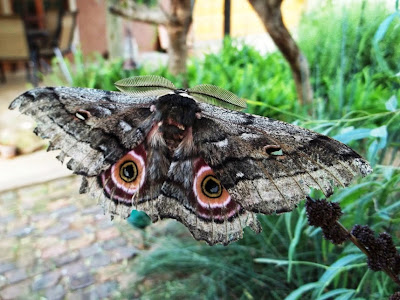(Syzigium cordatum - a.k.a Umdoni)
Our indigenous trees in South Africa are a good source of food; they’re both beautiful, and bountiful.
Wild fruits have an exceptionally high vitamin C content – partly what makes them so acid – and sometimes a high protein, fat, carbohydrate or mineral content.
Global warming and climate change are topics that are repeatedly discussed in the media and amongst concerned citizens of Planet Earth. And so they should be. Yet too few people seem sufficiently motivated to make a lasting and positive impact on these disturbing trends by changing their lifestyles even a smidgen. It doesn’t have to be a drastic, life-altering change. It can be as simple and rewarding, as planting a tree, or two, or three?
Trees benefit the ecosystems of the world by providing habitats for many creatures that play significant roles in maintaining the balance of nature. They fertilise and look after the soils, absorb massive quantities of carbon dioxide, release life-giving oxygen, and absorb the rainfall and slowly release it back into the atmosphere or into ground water supplies.
They provide the magic, medicine and poison that minister to the mind and spirit of man; fuel, timber, shade and shelter and, not least of all, food provide for the physical body which is, perhaps, more important in the minds of many people.
Our indigenous trees are a source of all these things, but let’s take a look at trees as a potential source of nourishment. Over hundreds of years the wild trees in this country have provided sustenance – the difference between hunger and plenty, life and death, for people and their livestock, and for the wild animals which they hunted and on which they fed. Today, with our so-called sophisticated tastes, many of these tree foods are unappealing to the palate.
The Waterberry is also known as Waterbessie (Afrikaans), umdoni (Xhosa, Zulu), montlho (Northern Sotho) and (more technically) Syzigium cordatum. The fruits grow in profusion on these rather splendid trees.
The fruits are surprisingly sweet when ripe ones and sour and tangy before reaching their prime.
Syzigium cordatum – the Waterberry tree – belongs to the family Myrtaceae along with the various guavas, pomegranates and Australian gums. Most people are also familiar with the common Eugenia used as a hedging plant. We’ve all used allspice and cloves in the kitchen. These are the aromatic fruits and flower buds respectively of other members of this same family, and which have great commercial value in Asia.
The Waterberry is an evergreen, water-loving tree occurring fairly widely in South Africa and in a wide range of habitats ranging from forest margins, along water courses, in open bush and rocky outcrops, and from sea level to altitudes of 1 600 metres. It reaches heights of 12 to 18 metres, the larger specimens being found in swamp forests where they have been described as being ‘literally supported on top of quagmires by the tremendous spread of their roots’.
A large 200-year old Waterberry tree at the Waterberry Coffee Shop in Ballito, South Africa. Unfortunately this tree fell over a couple of years ago, crushing half the coffee shop in the process. The theory was that the water-logged ground it was growing in couldn't support its weight any longer. I took this picture a few years ago.
Waterberries are dense with round or spreading canopies and are often more luxuriant at the coast where the air is more humid, and water tables may be higher.
In fact, it is believed that the presence of these trees in the wild indicates the presence of ground water. The blue-green leaves are thick and leathery, well able to tolerate the gale-force winds in the South-Western Cape and new foliage is bright red which adds to the aesthetic appeal of the tree. In the wild, browsing animals such as the Kudu eat the leaves and there are certainly birds such as the Crowned Hornbill which indirectly benefit by feeding off the hairy caterpillars of moths and butterflies that sometimes infest it occasionally.
In early spring and summer the clusters of sturdy buds at the ends of the branches burst into creamy-white or pink flowers which drop their petals very quickly leaving little puffs of stamens. The flowers have a delicate scent, produce large amounts of nectar and provide a good food source for bees and other insects. In late summer and autumn, the fleshy, deep pink to purple berries ripen, each one with one pip and these provide food for humans and a variety of animals including monkeys, birds, tortoises and mice.
This tree is perhaps one of the most useful in our arboreal anthology:
- It provides nesting sites and habitats for a variety of wild life.
- Its bark provides a reddish-brown or orange dye, is used as an emetic and to treat stomach complaints and diarrhoea.
- Powdered bark is also used as a fish poison. The leaves and roots are used for treating respiratory ailments and tuberculosis.
- The timber is heavy and hard, strong and elastic with a beautiful grain and, after seasoning in water, has been used for beams and rafters, furniture, boat building and fuel.
It is purportedly strongly fire-resistant: perhaps we should be planting more of it as fire-breaks in vulnerable areas.
(All photographs taken in my garden)
Source Biophile Magazine Issue 16
.

































